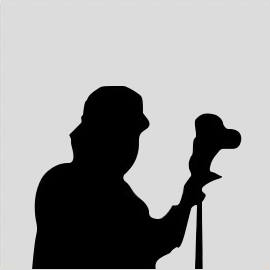0 Likes
نقاشی هایِ سهیلِ مختار منظره هایِ همیشگی نیستند.این را در نگاه اول میتوان دریافت.منظره هایِ مختار جایی دیگر از منظره اند.دورنما نیستند راویِ اندوهِ منظره اند.اندوهی که ما زیبائیش را قبلاً دیده ایم لذتش را شکار کرده ایم و حالا لاشه اش ما را همزمان غمزده و کنجکاو میکند.انگار تمام اتفاقاتی که از سرگذرانده است را اندوهناکانه اما با شکوه به ما نشان میدهد.مثلِ ذکر مصیبتی مفصل یا پیشبینیِ مفصلِ یک مصیبت.با جزئیات اما به ذهنِ ما گنگ.همانگونه گنگ که فیگورهایِ مبهمِ شبهِ اساطیری در این سو و آنسوی منظره.اینها انگار تفاله هایِ منظره اند؛نه باقیمانده یِ حادثه که تفاله یِ اندوه.به عبارتی بهتر رسوبِ اندوه؛اشباحی که دیگر بخشی از تاریخ ِمنظره شده اند و در چرخه یِ روح ِطبیعت بازیافت نشده اند ،نمیشوند و نخواهند شد.منظره هایِ مختار طرفِ دیگرِ منظره اند زبان و لهجه ای از طبیعت که فراموش شده یا هنوز کشف نشده است.ناگهانِ یک منظره یِ به ظاهر اساطیری ولی هنوز دیده نشده ؛ جایی که سالها دنبالش گشته ایم و نیافته ایم و ناگهان پیش چشممان سکوت را عربده میزند.سکوتی که قبلا در خود گم کرده ایم اندوهی که قرار است روزی دچارش شویم.
وحید شریفیان
Soheil Mokhtar's Paintings, evident at the very first glance, are not as the usual landscapes. Mokhtar’s landscapes present a different kind of scene. They are not there to predict anything but to solely narrate the misery of the landscapes. We have seen the beauty of this misery and hunted its pleasure and now its corpse makes us both gloomy and curious. It seems as though he is sadly and gloriously showing us all the incidents he has lived through. They resemble a thorough tragedy or a thorough forecast of a tragedy. Although providing considerable details, we are left with a vague impression. Its vagueness is similar to the vagueness of the quasi-mythological figures which have been stuck in his works here and there. These figures seem to be the dross of the landscape, not the remaining of the incident, but the dross of the misery. They are the ghosts becoming a part of the history of the landscape and have not been recycled in the cycle of nature’s soul; they cannot and will not be recycled. Mokhtar’s landscapes reveal another aspect of nature. They convey a language or dialect of nature which have either been forgotten or not been discovered yet. On the spur of the moment, you are faced with a seemingly mythological scene which has not been seen so far. This place is where we have searched for years but could not find; yet, suddenly, it shouts the silence right in front of our very eyes. This is the silence in which we have lost ourselves and a sorrow from which we are about to suffer one day.
Vahid Sharifian
...





Overview and HistoryTehran is the capital of Iran and the largest city in the Middle East, with a population of fifteen million people living under the peaks of the Alborz mountain range.Although archaeological evidence places human activity around Tehran back into the years 6000BC, the city was not mentioned in any writings until much later, in the thirteenth century. It's a relatively new city by Iranian standards.But Tehran was a well-known village in the ninth century. It grew rapidly when its neighboring city, Rhages, was destroyed by Mongolian raiders. Many people fled to Tehran.In the seventeenth century Tehran became home to the rulers of the Safavid Dynasty. This is the period when the wall around the city was first constructed. Tehran became the capital of Iran in 1795 and amazingly fast growth followed over the next two hundred years.The recent history of Tehran saw construction of apartment complexes and wide avenues in place of the old Persian gardens, to the detriment of the city's cultural history.The city at present is laid out in two general parts. Northern Tehran is more cosmopolitan and expensive, southern Tehran is cheaper and gets the name "downtown."Getting ThereMehrabad airport is the original one which is currently in the process of being replaced by Imam Khomeini International Airport. The new one is farther away from the city but it now receives all the international traffic, so allow an extra hour to get there or back.TransportationTehran driving can be a wild free-for-all like some South American cities, so get ready for shared taxis, confusing bus routes and a brand new shiny metro system to make it all better. To be fair, there is a great highway system here.The metro has four lines, tickets cost 2000IR, and they have segregated cars. The women-only carriages are the last two at the end, FYI.Taxis come in two flavors, shared and private. Private taxis are more expensive but easier to manage for the visiting traveler. Tehran has a mean rush hour starting at seven AM and lasting until 8PM in its evening version. Solution? Motorcycle taxis! They cut through the traffic and any spare nerves you might have left.People and CultureMore than sixty percent of Tehranis were born outside of the city, making it as ethnically and linguistically diverse as the country itself. Tehran is the most secular and liberal city in Iran and as such it attracts students from all over the country.Things to do, RecommendationsTake the metro to the Tehran Bazaar at the stop "Panzda Gordad". There you can find anything and everything -- shoes, clothes, food, gold, machines and more. Just for the sight of it alone you should take a trip there.If you like being outside, go to Darband and drink tea in a traditional setting. Tehranis love a good picnic and there are plenty of parks to enjoy. Try Mellat park on a friday (fridays are public holidays), or maybe Park Daneshjou, Saaii or Jamshidieh.Remember to go upstairs and have a look around, always always always! The Azadi Tower should fit the bill; it was constructed to commemorate the 2500th anniversary of the Persian Empire.Tehran is also full of museums such as:the Contemporary Art Museumthe Abghine Musuem (glass works)the 19th century Golestan Royal Palace museumthe museum of carpets (!!!)Reza Abbasi Museum of extraordinary miniaturesand most stunning of all,the Crown Jewels Museum which holds the largest pink diamond in the world and many other jaw-dropping jewels.Text by Steve Smith.